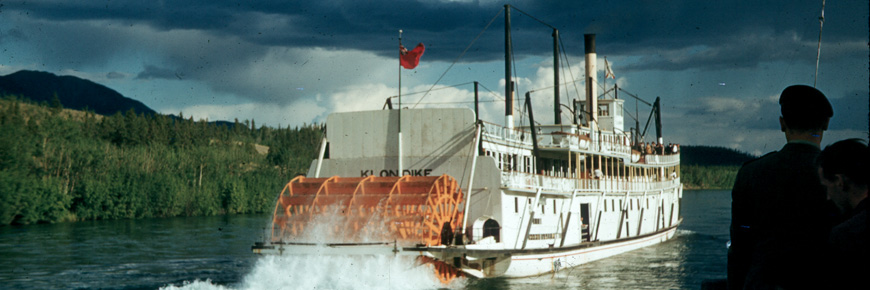
© Ian Watson
Culture
S.S. Klondike National Historic Site
Steam powered sternwheelers were used on many river and lake systems in Canada. While not unique to the Yukon there are few other places where they were used as extensively – sternwheelers were the heart of the Yukon's transportation system for almost four generations. During this ninety-year period over 250 sternwheelers plied the Yukon River and its tributaries. The S.S. Klondike is designated as a National Historic Site of Canada to commemorate the role these sternwheelers played in the history of the Yukon.
History
After a long cold Yukon winter the sight of the first sternwheeler of the season would be reason to celebrate. Fresh food, supplies and news from the outside world would be welcomed as it pulled into shore. This was spring in the Yukon before the coming of roads, when sternwheelers worked the swift shallow waters of the Yukon River.
Architecture
The S.S. Klondike was built in Whitehorse by the British Yukon Navigation Company (BYN), a subsidiary of the White Pass & Yukon Route railway (WP&YR). Of shallow draft, she was specifically designed and constructed to eliminate the need to push a barge when carrying the heavy ore sacks coming out of the Mayo silver mining district upriver to Whitehorse.
Cultural landscape
Miles Canyon and the White Horse Rapids were the only serious obstacles to navigation along the entire length of the Yukon River. By passed by the White Pass & Yukon Route (WY&YR) railway, the town of Whitehorse located immediately below the rapids, became the “end of steel”, trans-shipment point for freight and base of operations for the British Yukon Navigation Company (BYN) sternwheel fleet.
While the White Horse Rapids have been drowned by a hydro dam and the sternwheelers have been replaced by roads, Whitehorse still bears the marks of its colourful sternwheel past.
Related links
- Date modified :